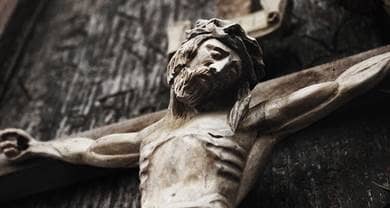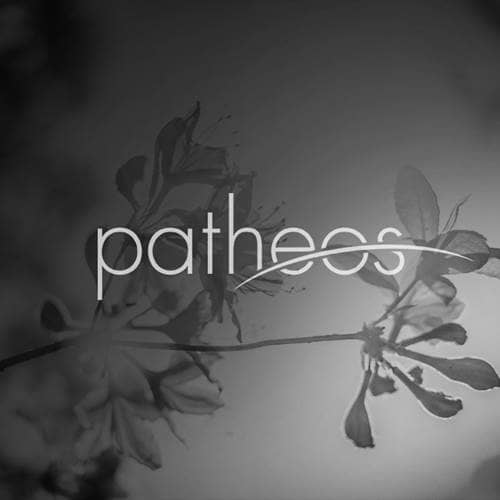- Trending:
- Pope Leo Xiv
- |
- Resurrection
- |
- Trump
- |
- Social Justice
- |
- Peace
- |
- Pope Francis

RELIGION LIBRARY
Roman Catholicism
Historical Perspectives
In January 1959, Pope John XXIII (1958-1963) stunned the Church and the world when he called for an ecumenical council, ultimately called Vatican II and meeting 1962-1965. His goal was to see if the Church could update herself (using the Italian word aggiornamento), engage fellow Christians, and work toward repairing other difficult relationships, such as the one the Church had with Judaism. He lived only to see the first session, but his successor Paul VI (1963-1978) continued his effort to make the Church more accessible, relevant, appealing, global, open-minded, and refreshing. The council was, in John's words, supposed to be a new Pentecost.
Much of this effort sent theologians, liturgists, scriptural scholars, liturgists, and Church historians back to the Church's past in order to understand her present and chart her future. While a segment of Catholics considered the Church as unchanging and fixed in time--indeed, this was quite appealing and comforting to some eyes--others followed the logic articulated by John Henry Newman in the late 19th century, that the Church had been undergoing development and change throughout her history. The label "Tridentine church," referring to the Council of Trent that had concluded in 1563, was used to label and sometimes slander a Church set in stone and backward in thinking, but in reality it had only been during the last two centuries or so that the Catholic Church had closed herself off from modern developments stemming from the Scientific Revolution and Enlightenment of early modernity.
Much of the credit for a reconsideration of Catholic Church history must go to John XXIII, the only trained Church historian elected pope, and John Paul II (1978-2005), a man with a strong sense of history. It was John XXIII who famously, as he prepared for his first Good Friday service after his election in 1958, with a pen struck out words that disparaged Jews from the liturgical text, saying aloud, "Basta! (Enough!)." It was this attitude that led, albeit after his death, to Vatican II's statement Nostra aetate (the Declaration of the Relation of the church to non-Christian religions) that changed the course of Church history by lamenting violence done against Jews and stating clearly that not all Jews during the time of Jesus, and certainly none since then, can be accused of, and punished for, his death.
John Paul II went further, visiting the Holy Land, including the Holocaust memorial Yad Vashem, and leaving a plea for forgiveness from God in the Western Wall for crimes perpetrated by Christians against Jews over two millennia. Indeed, John Paul II made more than 100 statements acknowledging to various degrees Catholic errors in judgment, violence, and persecution during Church history, often asking God for forgiveness and the aggrieved groups or their descendants for an open hand in reconciliation. This practice of admitting mistakes, a practice not continued under Benedict XVI, was greeted by many as a groundbreaking effort at institutional honesty and self-reflection--particularly as an example of sound historical thinking within the Vatican--but others feared that admitting mistakes of action might be a slippery slope that would cause groups within the Church to question whether doctrinal matters can similarly be reevaluated.
Openness toward fellow Christians has also marked the most recent generation of Roman Catholicism, although the record here has been more mixed because of recent Vatican statements that only the Roman Catholic Church contains the fullness of truth related to Jesus. While Catholics and various Protestant groups have made remarkable progress on issues such as scripture study, social justice, and a shared moral vision, the reticence of the papacy under John Paul II and Benedict XVI (2005-present) to recognize Protestant churches as sister churches even worthy of the word "church" has led non-Catholics to wonder whether ecumenical steps forward since the 1960s have stalled in the last decade. Moreover, some were mystified by Benedict XVI's decision in 2006 to drop the title "Patriarch of the West" (alternately used as "Patriarch of Rome" in the first millennium especially). He did so because, he said, the phrase was no longer accurate; the world had changed from ancient categories of east and west.
Perhaps the most important historical development in recent Church history is the recovery of the very idea of development as a paradigm for understanding Catholicism. As noted earlier, the 19th-century British theologian and cardinal, John Henry Newman (1801-1890), was an early champion of the idea of development as a norm in Church history. He said that truth does not develop, but the categories and formulas we use to describe dogma do and must as we move from one language to another and as our understanding increases. Jesus was fully human and fully divine before the early Church found the words to say so, for example, and the Church has always believed that the Eucharist truly contains the Real Presence of Jesus' body and blood even though it took the medieval scholastic word transubstantiation to best describe this mysterious, eternal truth 1,300 years after the Last Supper. Growth, said Newman, implies change and a recognition that reform can only occur when one is honest enough to accept that things are deformed. The Church's work in the century before and half-century since Vatican II have been merely the latest examples of trying to update fundamental truths and practices, to reconcile faith and reason, to balance tradition with progress, and to marry continuity with discontinuity. A kind of dynamic orthodoxy emerges as the Church transmits an ancient faith in a fast-changing world.
Study Questions:
1. What was the agenda of Vatican II?
2. Who were John XXIII and John Paul II? What did they contribute to the Judaism-Catholicism divide?
3. Why did Benedict XVI drop the title “Patriarch of the West”? What implications does this have for ecumenism?










